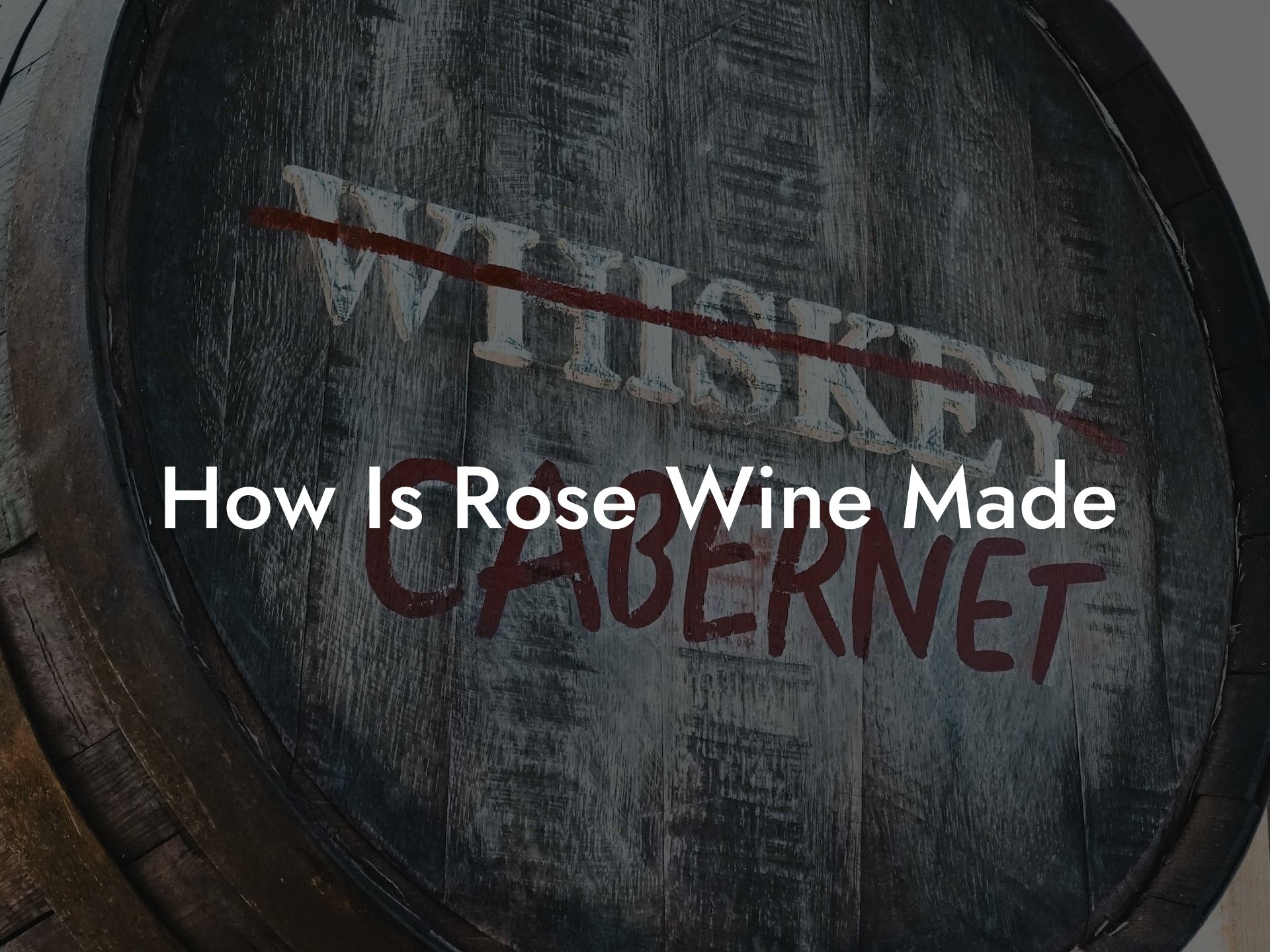Rose all day, anyone? There's something undeniably refreshing about a crisp glass of rose wine, perfect for those warm summer days or a casual night out with friends. But have you ever wondered how this elegant and versatile wine is actually made? In this article, we'll take you on a journey through the process of making rose wine, so the next time you sip on that sweet pink nectar, you'll have a deeper appreciation for what's in your glass. Let's dive in and explore the fascinating world of rose wine!
How Is Rose Wine Made Table of Contents
What is Rose Wine?
Rose wine, often referred to as "blush wine," is a type of wine that's made from red grape varieties, exhibiting a pinkish or light red color. The distinct color is a result of limited contact with grape skins during the winemaking process. Rose wines can be made in various styles, ranging from dry to sweet and sparkling to still. They are known for their fresh and fruity flavors, encompassing the best qualities of both white and red wines.
The Winemaking Process
There are three primary techniques in making rose wine. Each method imparts different characteristics and flavors to the final product. Let's explore each of them:
Do You Want to Win a Free Bottle of Wine?
Don't miss out on the opportunity to win a free bottle of wine every week.
Enter our weekly prize draw today!
1. Limited Skin Contact Method
- This is the most common technique for making rose wines. Red grape varieties are crushed, and the juice is left in contact with the grape skins for a short period (usually 12-48 hours).
- During this time, the juice absorbs some of the color and flavors from the skins.
- After this brief maceration period, the juice is separated from the skins and fermented in stainless steel or oak vessels to produce the final rose wine.
- The longer the juice is left in contact with the skins, the darker and more intense the final wine's color and flavors will be.
2. Saignée (Bleeding) Method
- The Saignée method is often used to produce high-quality rose wines, as well as to concentrate red wines.
- During the early stages of red wine production, a portion of the juice is removed (or "bled") from the fermentation tank.
- This removed juice has a pink hue and is then fermented separately to produce rose wine.
- The remaining juice in the tank is left with a higher grape skin to juice ratio, resulting in a more concentrated red wine.
3. Blending Method
- The blending method involves mixing red and white wines together to create a rose wine.
- This technique is more common in sparkling wine production, particularly for Champagne.
- Although technically permitted in some regions, this method is generally considered less prestigious than the other two methods and is less frequently used for still rose wines.
Popular Rose Wine Varieties
Rose wines can be made from a wide range of red grape varieties. Some popular options include:
- Grenache
- Syrah
- Pinot Noir
- Cabernet Sauvignon
- Mourvèdre
- Sangiovese
- Tempranillo
The specific grape variety or blend used will determine the wine's flavor profile, acidity, and level of fruitiness.
How Is Rose Wine Made Example:
Imagine you're visiting a winery in Provence, the birthplace of rose wine. The sun is shining, and the vineyards are bursting with ripe red grape varieties. You're led through a step-by-step tour of the winemaking process, observing as the grapes are crushed, and the vibrant pink juice is separated from the skins. You learn about the careful balance needed to extract just the right amount of color and flavor, while still maintaining the delicate, refreshing characteristics that rose wines are known for. As you taste the finished product, you can't help but appreciate the artistry and skill that goes into making each bottle.
Now that you have a deeper understanding of how rose wine is made, you can enjoy it that much more. Whether you're sitting poolside, hosting a dinner party, or simply sipping a glass to unwind after a long day, remember the artistry, technique, and passion that went into the bottle. We hope this guide has piqued your curiosity and inspired you to continue exploring the world of wine. Share this article with your fellow wine lovers, and be sure to check out other informative and entertaining guides on the Black Wine Club's website. Cheers and santé!
Do You Want to Win a Free Bottle of Wine?
Don't miss out on the opportunity to win a free bottle of wine every week.
Enter our weekly prize draw today!












